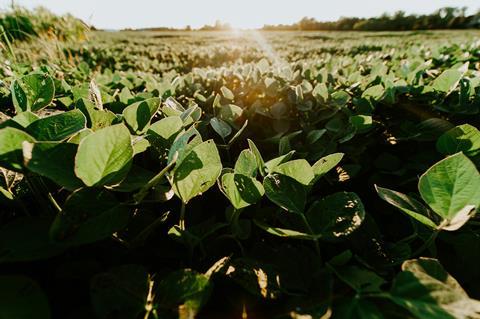A research team identified three rhizobia strains, Rhizobium sp. TZSR12C, Rhizobium sp. TZSR25B, and Bradyrhizobium sp. TZSR41A, which effectively suppressed root rot fungal pathogens in soybeans under both in vitro and greenhouse conditions. These strains demonstrated significant potential as biocontrol agents, particularly Rhizobium sp. TZSR12C in greenhouse settings.

The study suggests the promising application of these rhizobia strains in managing root-rot diseases in soybeans, paving the way for future on-farm trials and deeper exploration into their biocontrol mechanisms.
READ MORE: New nitrogen-fixing bacteria for sustainable agriculture
Rhizobia is known for nitrogen fixation in legumes, reducing the need for synthetic fertilizers. Additionally, they can suppress soil-borne pathogens like F. solani and R. solani in soybeans, which are highly prone to root-rot diseases. However, their effectiveness varies due to agro-ecological factors, requiring multi-location trials. Current research has limited attention on the combined effects of multiple pathogens.
Root rot fungi
A research article (DOI: 10.48130/tia-0024-0007) published in Technology in Agronomy on 20 May 2024, investigates the ability of Rhizobium and Bradyrhizobium species to suppress root rot fungi in soybean seedlings, aiming to enhance biocontrol strategies.
To evaluate the inhibition of root rot fungal pathogens, 25 rhizobia strains were tested under in vitro conditions. Three strains, Rhizobium sp. TZSR12C, TZSR25B, and Bradyrhizobium sp. TZSR41A demonstrated the ability to suppress four fungal pathogens which are F. solani, M. phaseolina, R. solani, and F. oxysporum. Rhizobium sp. TZSR25B formed the largest inhibition zone (8.3 mm) against F. oxysporum, while Rhizobium sp. TZSR12C was effective against three fungi, forming clear zones.
For the pot experiments, the soil had a sandy clay loam texture, a neutral pH, and high levels of organic carbon, nitrogen, and essential nutrients, making it conducive to microbial activities. Under greenhouse conditions, rhizobia and T. harzianum enhanced seed germination in contaminated soils. Rhizobium sp. TZSR25B yielded the highest germination rate of 96.67% in non-contaminated soils.
In pathogen-contaminated soils, Rhizobium sp. TZSR12C and TZSR25B significantly reduced infection and severity, achieving 0.00% infection in both the roots and foliage. These results indicate that rhizobia strains are highly effective biocontrol agents against root rot fungi in soybeans, warranting further field trials to confirm their efficacy in real-world conditions.
Biocontrol agents
According to the study’s lead researcher, Monica D. Nakei, “The results of this study give an insight into the suitability of the tested rhizobia species as effective biocontrol agents for the selected root rot fungi. However, the test was conducted only under in vitro and greenhouse conditions hence, future research should focus on on-farm trials to validate the biocontrol potential of the identified rhizobia strains in real-world agricultural settings. Additionally, further investigations into the mechanisms of interaction between the rhizobia strains and specific fungal pathogens would contribute to a more comprehensive understanding of their biocontrol capabilities.”
In summary, this study identified three rhizobia strains, Rhizobium sp. TZSR12C, TZSR25B, and Bradyrhizobium sp. TZSR41A effectively suppressed root rot fungal pathogens in soybean under in vitro and greenhouse conditions. The Rhizobium sp. TZSR25B showed the highest inhibition in vitro, while Rhizobium sp. TZSR12C excelled in greenhouse trials. Future research should focus on on-farm trials to validate these findings and explore the interaction mechanisms between rhizobia and fungal pathogens for improved disease management.







No comments yet